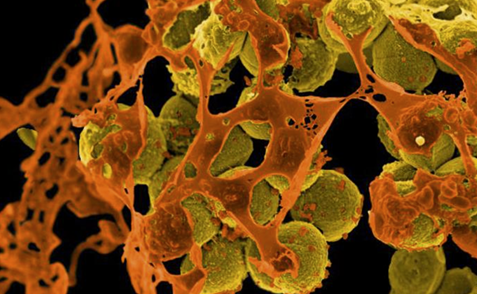Medical Pharmacology Chapter 35 Antibacterial Drugs
Penicillin G and Penicillin V Pharmacology and Therapeutics
Resistance to penicillin G/V is widespread in many bacteria due to several mechanisms.
The most common mechanism is bacterial production of β-lactamase enzymes (penicillinases) that hydrolyze the β-lactam ring, inactivating penicillin.1
Many Staphylococcus aureus strains evolved a penicillinase shortly after was introduced to clinical practice.
 |
|
At present >90% of S. aureus are penicillin-resistant, rendering natural penicillins ineffective for routine staph infections.1
Some Gram-negative bacteria (e.g. certain Haemophilus and Bacteroides species) also produce β-lactamases that destroy penicillin.
A second resistance mechanism is alteration of the target PBPs so that penicillin binds with less affinity.2
For example, penicillin-resistant Streptococcus pneumoniae and Neisseria gonorrhoeae have modified PBPs with reduced β-lactam affinity, requiring higher penicillin concentrations for effect.3
Methicillin-resistant S. aureus (MRSA) carries a novel PBP (PBP2a) that penicillins cannot effectively bind thus conferring resistance to all β-lactams.4
The third mechanism is reduced antibiotic permeability or efflux.
Gram-negative bacteria with an outer membrane may prevent adequate penetration of penicillin5 or actively pump it out.1
This intrinsic barrier makes many Gram-negative rods (e.g. E. coli, Pseudomonas) inherently less susceptible to penicillin G/V.6
Subsequently, penicillins (ampicillin, etc.) were developed that penetrate Gram-negative bacteria more effectively.
Because of these resistance factors, penicillin is no longer first-line for certain diseases it once cured.
Examples include gonorrhea and meningococcal meningitis which are more likely treated with third-generation cephalosporins due to resistance.1
Similarly, penicillin should not be used for S. aureus infections unless the isolate is confirmed susceptible (such cases are now uncommon).1
To overcome β-lactamase–mediated resistance, penicillins can be combined with β-lactamase inhibitors (e.g. amoxicillin-clavulanate) or modified (e.g. oxacillin, dicloxacillin) to resist staphylococcal penicillinase1
However, such approaches apply to other penicillins, not penicillin G or V themselves.
August, 2025
|
|
This Web-based pharmacology and disease-based integrated teaching site is based on reference materials, that are believed reliable and consistent with standards accepted at the time of development. Possibility of human error and on-going research and development in medical sciences do not allow assurance that the information contained herein is in every respect accurate or complete. Users should confirm the information contained herein with other sources. This site should only be considered as a teaching aid for undergraduate and graduate biomedical education and is intended only as a teaching site. Information contained here should not be used for patient management and should not be used as a substitute for consultation with practicing medical professionals. Users of this website should check the product information sheet included in the package of any drug they plan to administer to be certain that the information contained in this site is accurate and that changes have not been made in the recommended dose or in the contraindications for administration. Advertisements that appear on this site are not reviewed for content accuracy and it is the responsibility of users of this website to make individual assessments concerning this information. Medical or other information thus obtained should not be used as a substitute for consultation with practicing medical or scientific or other professionals. |